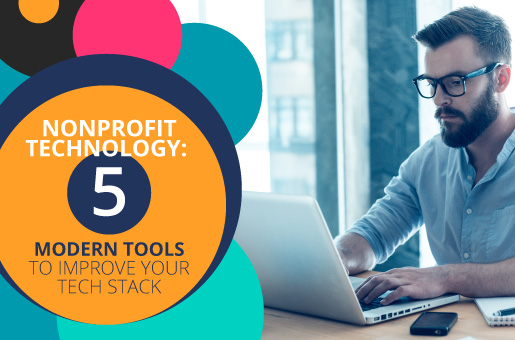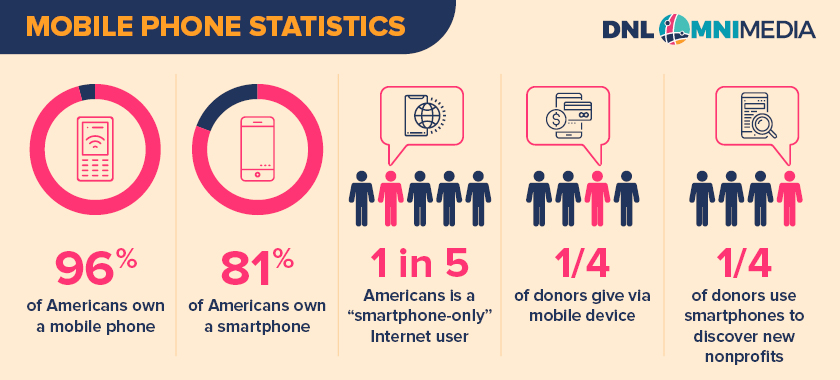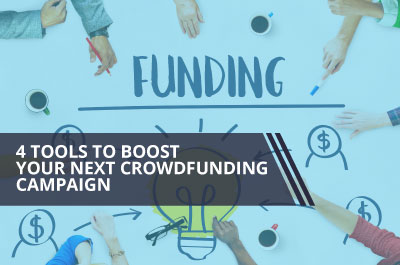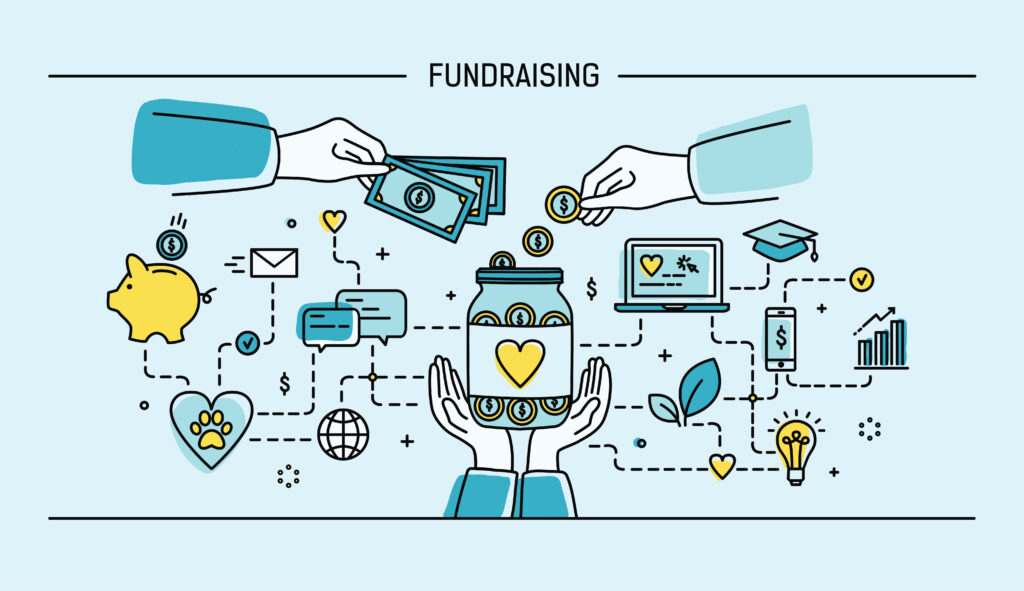Almost 4.66 billion people in the world are active internet users. As the core pillar of modern information, the internet is now your greatest asset when it comes to furthering your nonprofit mission and improving your fundraising efforts. With more people online than ever before, it’s a no brainer that a well maintained website should be top priority. But what does this mean for your organization?
Let’s take some guidance from top experts in web design and development at Kanopi: “In order to have a well maintained website, you need regular website maintenance.”
However, a well maintained site doesn’t just mean a working one. Along with conducting security and plug-in/module updates, regular website maintenance involves ensuring you comply with accessibility standards, that your site values user experience (UX), that you tell a story through your site content, and that it is the focal point of all of your online engagements.
To learn more about what makes a well maintained website, let’s walk through the following benefits this can bring to your nonprofit:
- Increases fundraising revenue
- Teaches new audiences about your mission
- Leads to better search engine result ranking
- Acts as a source for supporters to engage directly
- Improves relationships with current supporters
How does a well maintained website accomplish the above? Let’s dive into each benefit and the optimizations you can make to your site to achieve them.
1. Increases online fundraising revenue
Your nonprofit website is where supporters make online gifts to your organization. Without a dedicated site and online donation page, it’s likely that prospective donors won’t know where to look and possibly skip out on giving altogether. When you take the steps to maintain your website and make it the best it can be, you’re also directly affecting your online fundraising revenue.
The easier it is for supporters to navigate your site, find the information they’re looking for, and fill out the online donation form, the more likely it is that they will continue to give to your cause and support your mission.
If you want your own nonprofit site to continue driving increased fundraising, make sure to implement these strategies:
- Include clear buttons and links to your online donation page
- Streamline the giving process with an optimized donation form that only asks the essentials
- Use an integrated and secure payment processor to keep donors on the same page and protected
- Make sure your online donation tool is working and integrated with your website
- Ensure your online giving process is mobile optimized
Additionally, the way your online donation page is laid out can make a huge difference in how likely someone is to complete their gift. If the form takes them to a third-party page, if the donation tool has errors, or if the form just takes too long to fill out are all reasons why users decide to click away and not donate at all.
Unsure if your website and donation page are up to standard? Use these top donation page examples in this iATS Payments resource from real nonprofits for guidance.
2. Teaches new audiences about your mission
Did you know that 27.5% of individuals have reported discovering new nonprofits through the internet and technology?
Kanopi-VolunteerLocal-5-Reasons-a-Well-Maintained-Nonprofit-Website-is-Essential_extra.jpg
According to this graphic depicting the donor journey, the next step after awareness is research. And, it’s likely that the first place prospective supporters will go to learn more about your organization is your nonprofit website.
With a well maintained nonprofit website, you’re able to welcome new audiences, introduce them to your mission, and showcase why you’re a worthwhile cause to support. In fact, many people actually have little patience for poorly maintained websites.
One survey conducted on millennials stated that top pet peeves on nonprofit sites include mobile-unfriendliness, missing information, and the inability to find what they’re looking for quickly and easily. If this is something your own site lacks, you’re missing out on a whole scope of potential supporters.
To ensure that your website meets the needs of new audiences, make sure to:
- Consistently update site content so that it showcases recent success stories and nonprofit accomplishments
- Check your mobile-optimization status with this free Google tool
- Optimize image and other media content size so that the website loads quickly (the Google recommended time is under 2 seconds)
- Include a navigation menu with clear links to content to help people learn more about your organization, like your mission statement, about us page, event calendar, and community testimonials from those you’ve helped
- Design your site with accessibility in mind and full compliance with the Web Content Accessibility Guidelines (WCAG), ensuring that users can engage with it despite location, language, ability, or device
Your nonprofit website is the most valuable way to market your organization online, and by taking the steps to properly maintain it, you can appeal to new audiences and turn prospects into full-time supporters.
3. Leads to better search engine result ranking
Along with optimizing your site to act as a reliable research tool for new audiences, you can actually take specific steps to increase your own search engine result ranking.
Search engine optimization (SEO) is the process of tweaking and updating your website to make it easier for search engines like Google to read and determine its value. When someone looks up a keyword related to your mission, you want Google to pull up your organization— otherwise, you’re buried by other similar content and possibly even other nonprofit sites.
Nonprofit website maintenance should also include actions that support search engine optimizations. Here are some easy ways to ensure this:
- Publish website content that with keyword phrases that your supporters are most likely to search for
- Use a specific heading structure with H1s, H2s, and so on to make it easier for search engines to crawl and read your site
- Include metadata into your website to include specific information that search engines read
- Use alternative text for media types like graphics and videos so search engines know what they are about
These are only some of the optimizations you can make to your website for improving search engine ranking. Explore qualified resources like Moz.com, a professional source for SEO tools, to learn more about what you might need to do for your own website.
4. Acts as a source for supporters to engage directly
In the end, the best nonprofit sites are the ones that act as the focal point of all important online engagements. From facilitating online fundraising to being the core research tool that supporters use, your website should be the first place people turn to support your organization in any way.
To explain this idea, let’s walk through a few scenarios:
- A supporter wants to contact your nonprofit to learn how they can get more involved — Your website should have clear contact information, including email and phone numbers.
- An individual wants to volunteer for an event — Your website should have a dedicated page listing all your volunteer opportunities and how to register for them.
- A supporter wants to follow your social media pages to have more frequent and casual updates — Include clear connections to all of your social media accounts through prominent links, widgets, or with an embedded running social feed.
- A supporter wants to attend a fundraising event to give to your cause and meet others — Create an event calendar for your upcoming events and campaigns. Be sure to have links that lead users to the registration page.
No matter how someone wants to engage with your organization, your nonprofit website should be their first instinct. If you don’t properly maintain your website, these needs are not met.
Make sure you consistently update your website navigation menu so that it connects users to their most desired actions. Not only does this present your site as a reliable resource, but also builds the positive relationship you have with supporters.
5. Improves relationships with current supporters
Not only can your website help you attract new audiences and increase your online fundraising revenue but it can also provide insight into your current supporters.
As the focal point of the majority of your online engagements, the data that your website collects is extremely valuable to your nonprofit digital strategies.
Use your content management system (CMS) to track data on which pages are most popular, how different users interact with your site, and the types of content they engage with the most.
With this information, you can even create different user or donor personas based on the typical habits of your various audiences. Then, create targeted marketing content and website optimizations that appeal to those groups.
However, this is almost impossible to do with a poorly maintained website. It’s critical that your CMS, any plug-ins or modules, and software integrations are consistently updated for full site functionality. This way, you can accurately track those key data points and learn more about what your current supporters value and how you can better meet their needs.
Conclusion
Most modern nonprofits have some sort of website to facilitate online engagements. But not every organization truly takes the time to make sure their own site is the best it can be. With limited time and resources, nonprofits often make the mistake of deprioritizing their website over more urgent tasks.
However, your website is the focal point of many of your important engagements, and without a well maintained one, you’ll miss out on several valuable opportunities. Remember to conduct consistent maintenance and keep your audience’s needs top of mind to reap the benefits. Good luck!
About the Author: Anne Stefanyk
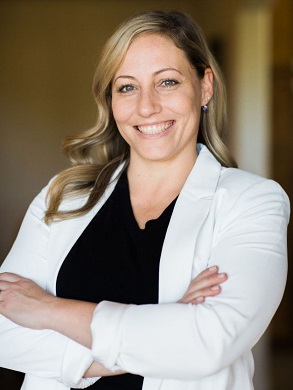
As Founder and CEO of Kanopi Studios, Anne helps create clarity around project needs, and turns client conversations into actionable outcomes. She enjoys helping clients identify their problems, and then empowering the Kanopi team to execute great solutions.
Anne is an advocate for open source and co-organizes the Bay Area Drupal Camp. When she’s not contributing to the community or running her thoughtful web agency, she enjoys yoga, meditation, treehouses, dharma, cycling, paddle boarding, kayaking, and hanging with her nephew.


